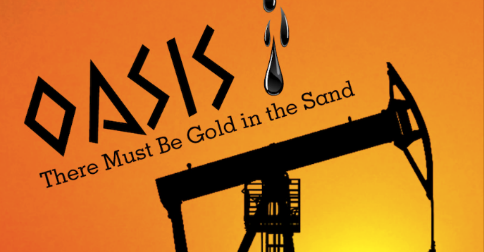Crisis in the Middle East & Oil Prices
Unfortunately, unrest in the Middle East has virtually become commonplace. This unrest is echoed throughout the world through economic impact. More specifically, when the world’s highest oil producing region is in turmoil, prices are affected across the world. Currently, the world is in disarray due to conflicts spread across the Middle East and the rest of the globe. A civil war is looming in Iraq between two religious groups. Rival Libyan militias are battling for control over the nation. Up north, Russia (the highest producer of oil last year) is battling Ukraine and the rest of the western world. All this while airplanes are falling from the sky, school girls are kidnapped in Nigeria, and Israel and Hamas are continuing a bloody war. Not a very optimistic outlook. All of these factors are affecting the price of liquid gold. According to a report by Ernst & Young, second quarter oil prices were up, primarily due to geopolitical risk in the Middle East and North Africa. However, there is a saving grace. America’s southern states are reaping the rewards of an oil boom and are mitigating the global crisis. Last year, the US began to produce more oil than it imported, something that has not been accomplished in nearly twenty years. Extraction innovation seen in shale oil has caused rejuvenation for the Permian Basin region, located in western Texas and Southeastern New Mexico. The introduction of shale oil technology allows oil production companies to access resources they previously were unable to. Original infographic from: Saxo Markets UK on
#1: High Reliability
Nuclear power plants run 24/7 and are the most reliable source of sustainable energy. Nuclear electricity generation remains steady around the clock throughout the day, week, and year. Meanwhile, daily solar generation peaks in the afternoon when electricity demand is usually lower, and wind generation depends on wind speeds.As the use of variable solar and wind power increases globally, nuclear offers a stable and reliable backbone for a clean electricity grid.
#2: Clean Electricity
Nuclear reactors use fission to generate electricity without any greenhouse gas (GHG) emissions.Consequently, nuclear power is the cleanest energy source on a lifecycle basis, measured in CO2-equivalent emissions per gigawatt-hour (GWh) of electricity produced by a power plant over its lifetime. The lifecycle emissions from a typical nuclear power plant are 273 times lower than coal and 163 times lower than natural gas. Furthermore, nuclear is relatively less resource-intensive, allowing for lower supply chain emissions than wind and solar plants.
#3: Stable Affordability
Although nuclear plants can be expensive to build, they are cost-competitive in the long run. Most nuclear plants have an initial lifetime of around 40 years, after which they can continue operating with approved lifetime extensions. Nuclear plants with lifetime extensions are the cheapest sources of electricity in the United States, and 88 of the country’s 92 reactors have received approvals for 20-year extensions. Additionally, according to the World Nuclear Association, nuclear plants are relatively less susceptible to fuel price volatility than natural gas plants, allowing for stable costs of electricity generation.
#4: Energy Efficiency
Nuclear’s high energy return on investment (EROI) exemplifies its exceptional efficiency. EROI measures how many units of energy are returned for every unit invested in building and running a power plant, over its lifetime. According to a 2018 study by Weissbach et al., nuclear’s EROI is 75 units, making it the most efficient energy source by some distance, with hydropower ranking second at 35 units.
#5: Sustainable Innovation
New, advanced reactor designs are bypassing many of the difficulties faced by traditional nuclear plants, making nuclear power more accessible.
Small Modular Reactors (SMRs) are much smaller than conventional reactors and are modular—meaning that their components can be transported and assembled in different locations. Microreactors are smaller than SMRs and are designed to provide electricity in remote and small market areas. They can also serve as backup power sources during emergencies.
These reactor designs offer several advantages, including lower initial capital costs, portability, and increased scalability.
A Nuclear-Powered Future
Nuclear power is making a remarkable comeback as countries work to achieve climate goals and ultimately, a state of energy utopia. Besides the 423 reactors in operation worldwide, another 56 reactors are under construction, and at least 69 more are planned for construction. Some nations, like Japan, have also reversed their attitudes toward nuclear power, embracing it as a clean and reliable energy source for the future. CanAlaska is a leading exploration company in the Athabasca Basin, the Earth’s richest uranium depository. Click here to learn more now. In part 3 of the Road to Energy Utopia series, we explore the unique properties of uranium, the fuel that powers nuclear reactors.




















